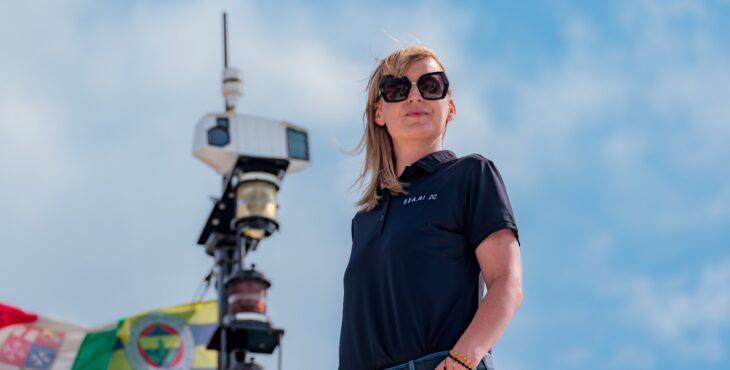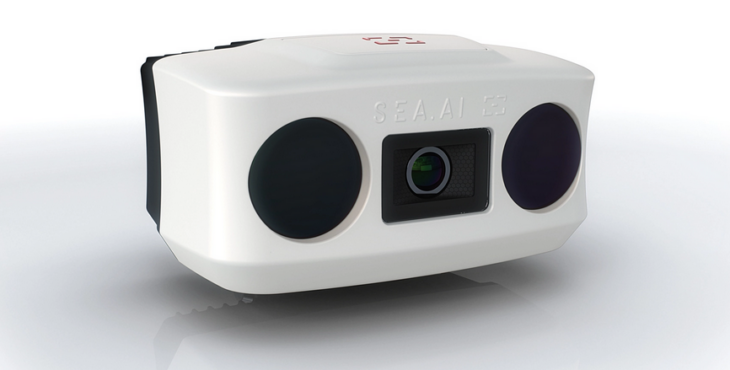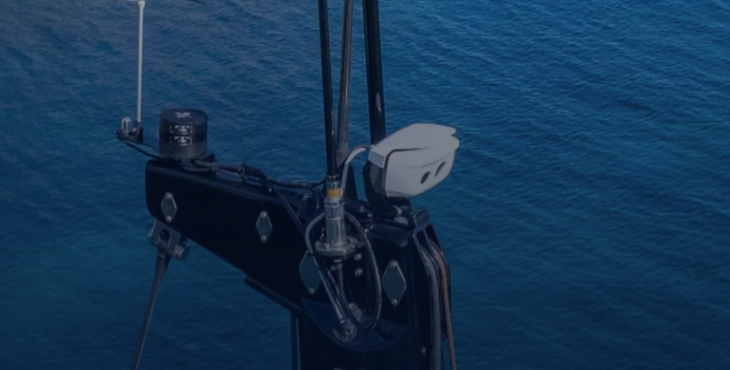Agata Widuto (SEA.AI) to DN: “Artificial vision is a second pair of eyes”
The sales manager at SEA.AI explains the advantages of their vision technology, which integrates artificial intelligence to recognize every floating object

The sales manager at SEA.AI explains the advantages of their vision technology, which integrates artificial intelligence to recognize every floating object
SEA.AI, a company specializing in artificial vision solutions for the maritime sector, is already on board various vessels worldwide. These solutions can detect, classify, and track floating objects—from rafts to boats, including debris, large mammals, and, of course, people. Their technology is used on recreational, commercial, governmental, research, and rescue vessels.
Daily Nautica interviewed Agata Widuto, SEA.AI’s sales manager, to understand how the idea of integrating artificial intelligence with vision technology came about, and to identify its current applications and future prospects.
SEA.AI, the foundation of an idea from automotive and ocean sailing
How was SEA.AI founded and with what objectives?
SEA.AI was founded by two people from very different worlds: one from the automotive industry, where machine vision and AI were already transforming safety systems, and the other from offshore solo sailing, where situational awareness is a matter of survival. They saw a glaring gap in maritime safety: traditional systems like radar and AIS don’t detect many of the real dangers at sea, such as unlit boats, drifting containers, or debris.
By combining automotive-grade vision technology with real-life offshore sailing experience, they created a system that works like a “second pair of eyes”—always alert, always watching, and reliable even in the harshest conditions.
To develop the first version of our technology, we partnered early on with top offshore racing teams. These sailors operate in extreme environments and push their equipment to the limit, making them the ideal testing ground. Their feedback allowed us to refine a system that’s not only fast and precise but also designed to perform effectively in the real world—under pressure, at sea.
They also helped us record our very first datasets at sea, real footage of authentic maritime scenarios. This dataset became the foundation for training our AI algorithms, giving the system the ability to detect and classify objects with high accuracy in complex, realistic marine environments.
This collaboration — between industry experts, elite sailors, and engineers — has resulted in a robust product purpose-built to address the real challenges of life at sea.
How is it possible that the detection accuracy is higher than that of traditional systems such as radar or AIS?
SEA.AI does not replace radar or AIS, it complements them by seeing what they cannot.
Radar depends on signal reflection and requires continuous adjustment to adapt to different environments. It may fail to detect low-profile or low-reflective objects like buoys, logs, or swimmers. AIS only detects vessels that actively transmit, but many hazards either do not have AIS or have it switched off.
Our systems use daytime and thermal cameras powered by AI trained on millions of real maritime images. The technology visually detects and classifies floating objects on the water surface: unregistered vessels, marine mammals, logs, containers, naval mines, or even people overboard—regardless of whether they emit signals.
The AI operates continuously, always ready to alert to any anomalies. Unlike a human lookout who can tire or get distracted, our system guarantees constant surveillance and a superior level of situational awareness. It integrates perfectly with radar, AIS, and other onboard instruments—enhancing safety especially in low-visibility or high-pressure conditions.
What solutions do you offer for recreational boating and yachts?
We offer a range of solutions tailored to various types of recreational boats and yachts.
For motor yachts, our systems are usually installed in high positions such as electronics masts or radar arches to ensure an unobstructed view. For sailing yachts, the system is always mounted atop the mast to maximize visibility and detection range.
Our product lineup includes:
- AI Sentry, a 360° full-coverage system designed for motor yachts
- AI Offshore or Competition, a lightweight solution specifically developed for sailing and racing yachts with rotating masts
- AI Brain, a software upgrade that adds AI detection capabilities to third-party thermal cameras
- AI Watchkeeper, our latest system, designed for small to medium-sized powerboats.
What does installation on a hull involve?
All systems are engineered for easy integration and rapid, non-invasive installation that does not alter the hull’s aesthetics or functionality. They adapt easily to both new builds and refits, improving onboard vision and situational awareness without requiring a full electronics overhaul—making them a smart upgrade for every need.
Is the system compatible with all types of plotters and onboard computers?
SEA.AI is designed to work with all major navigation and marine electronics systems such as Furuno, Garmin, Raymarine, Simrad, B&G, MaxSea TimeZero. It connects via NMEA2000, Ethernet, or HDMI.
Additionally, we support iOS and Android smartphones and tablets, and even laptops—so you can view and interact with the system from anywhere on the boat.
Which sectors currently make the most use of your innovation?
We are active in all three sectors.
Offshore racing teams were among our first users and have been running SEA.AI systems for years. They require fast, reliable situational awareness in every condition—some skippers won’t even leave the dock without activating the system. But don’t just take our word for it: sailor testimonials are available on our YouTube channel.
We continue to work closely with commercial operators who use SEA.AI to increase safety and reduce collision risks, particularly in high-traffic or low-visibility areas.
We’re also witnessing significant growth in maritime security: USVs, port authorities, coast guards, and patrol vessels are adopting AI-based visual detection systems to improve surveillance, save lives at sea, speed up response times, and enhance overall situational awareness.
In the recreational market, although growth is more gradual, there’s a clear shift: AI is becoming better understood and more accepted. When we launched SEA.AI, few in yachting really knew what AI was. Today, nearly everyone uses AI in some form, and this awareness helps yacht owners and crews recognize the value of intelligent vision systems for enhanced safety and peace of mind.
A new generation of intelligent vision systems
Are you preparing for new technological challenges?
Absolutely! We’re actively developing the next generation of maritime perception systems. For example, we collaborate with companies like TocaroBlue to integrate radar data into SEA.AI, creating a combined AI vision-and-radar system. This data fusion will provide a more comprehensive and reliable picture of the vessel’s surroundings.
We’re also working with navigation software providers like TimeZero and Adrena to connect SEA.AI directly to onboard systems, centralizing all critical information in one place.
Whale detection is another major initiative. We partner with international organizations to reduce the risk of collisions with marine mammals. Think of it as a kind of “Waze for the sea”, a networked system to detect, share, and avoid potential whale strikes.
Machine vision has long been the missing piece in the autonomy puzzle. With SEA.AI, vessels — including unmanned surface vehicles (USVs) — can now see and visually understand their environment, much like a human lookout but with greater consistency and reliability.
We are now working closely with autopilot manufacturers to connect visual intelligence directly to navigation control systems—laying the foundation for safer and smarter autonomous navigation at sea.
Topics: Daily Nautica, equipment and accessories





